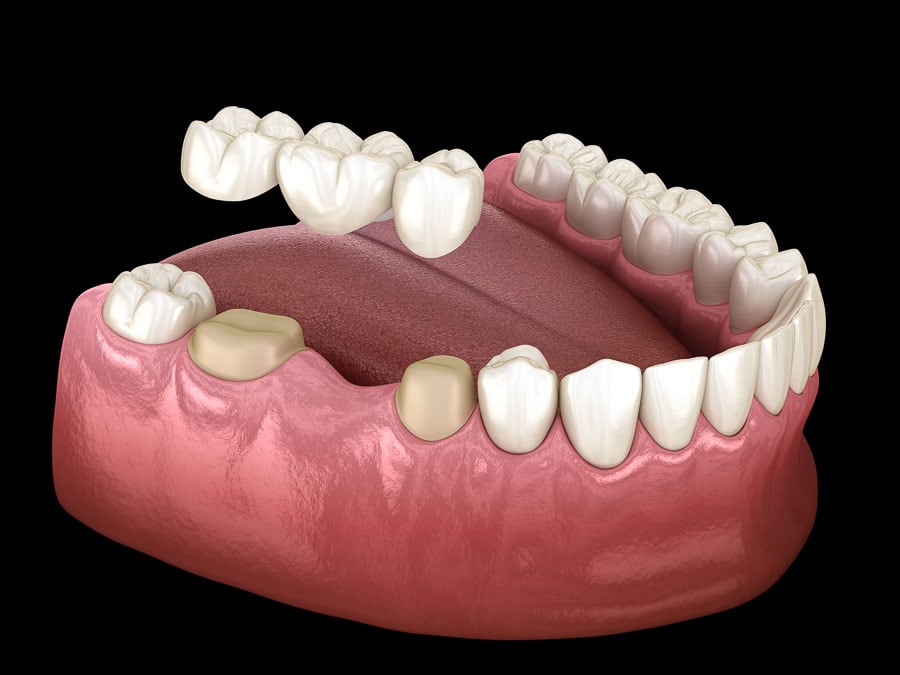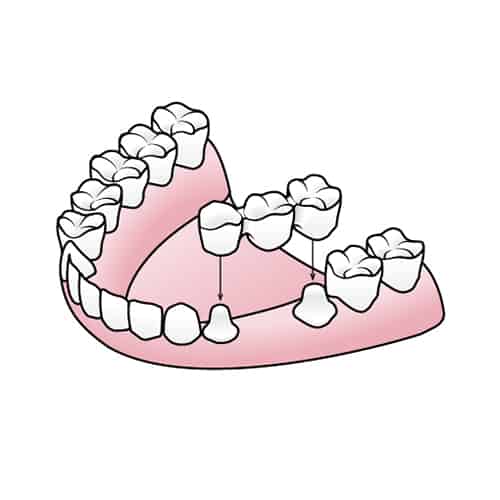Cumming Dental Smiles: Two Convenient Locations in Cumming, GA – Same Quality Care!


A dental crown, also known as a “cap” is a dental prosthesis that we use to cover a tooth if a tooth has sustained too much damage to have a regular filling. When we remove decay from the tooth (cavities), we try to remove as little tooth structure as possible, so that we can replace the missing tooth structure with a small filling. However, there are times where the decay is too extensive for us to repair a tooth with even a large filling, and thus we need to fabricate a crown for the tooth in order to protect it from further damage.
There are a number of materials that we use for dental crowns and we select with the patient on a case-by-case basis. The “workhorse” of dental crown treatment is the “PFM Crown.” This type of porcelain-fused-to-metal crown has been in use for decades, and provides strength, esthetics, and longevity. For areas of the mouth where cosmetics are key – such as the front teeth – we use ceramic materials to fabricate all-ceramic crowns.
Another important role for dental crowns is for teeth that have had root canal treatment. After a tooth has had a root canal procedure, it’s often recommended to have a crown placed on the tooth to improve the longevity of the root canal and the tooth.
A dental bridge is a dental prosthesis that we use in order to replace a missing tooth. The advantage of a bridge is that we can replace a missing tooth or teeth. The disadvantage is that we need to drill the teeth in front of and behind the space in order to support the replacement tooth.
As dental implants have become more available and successful, we often prefer to place an implant and an implant crown instead of a dental bridge, because using a dental implant to restore a missing tooth does not require drilling of the adjacent teeth.